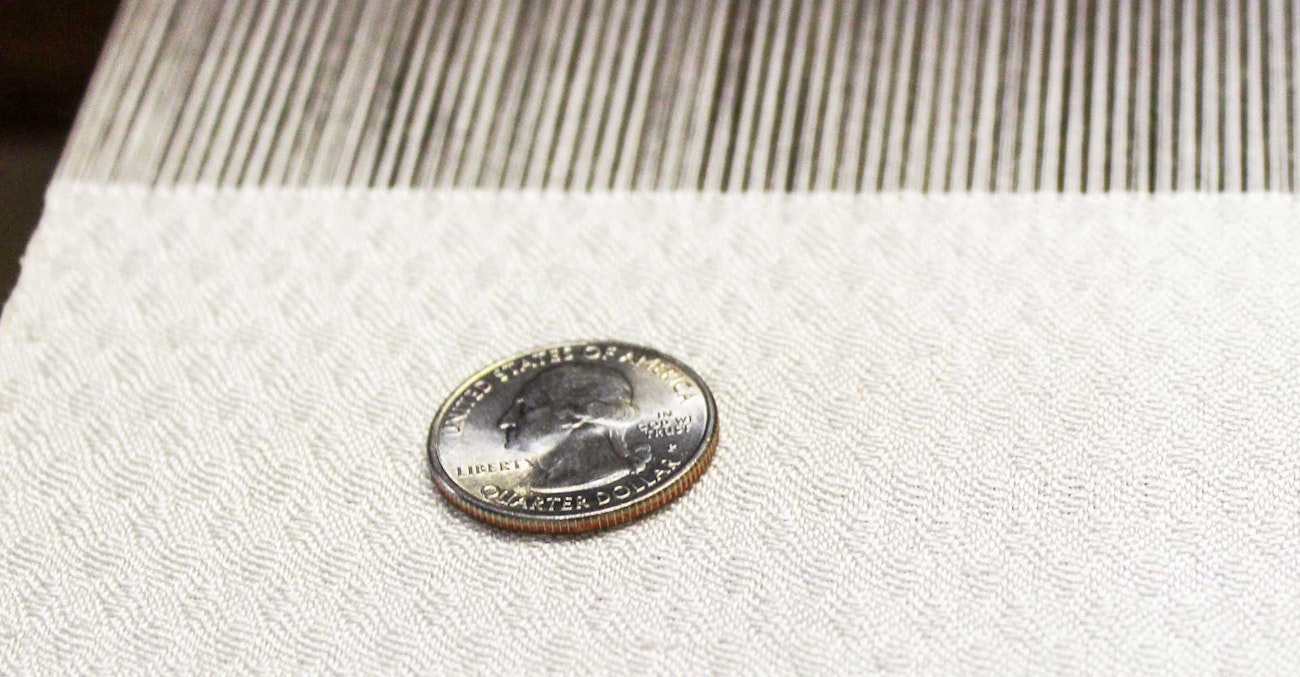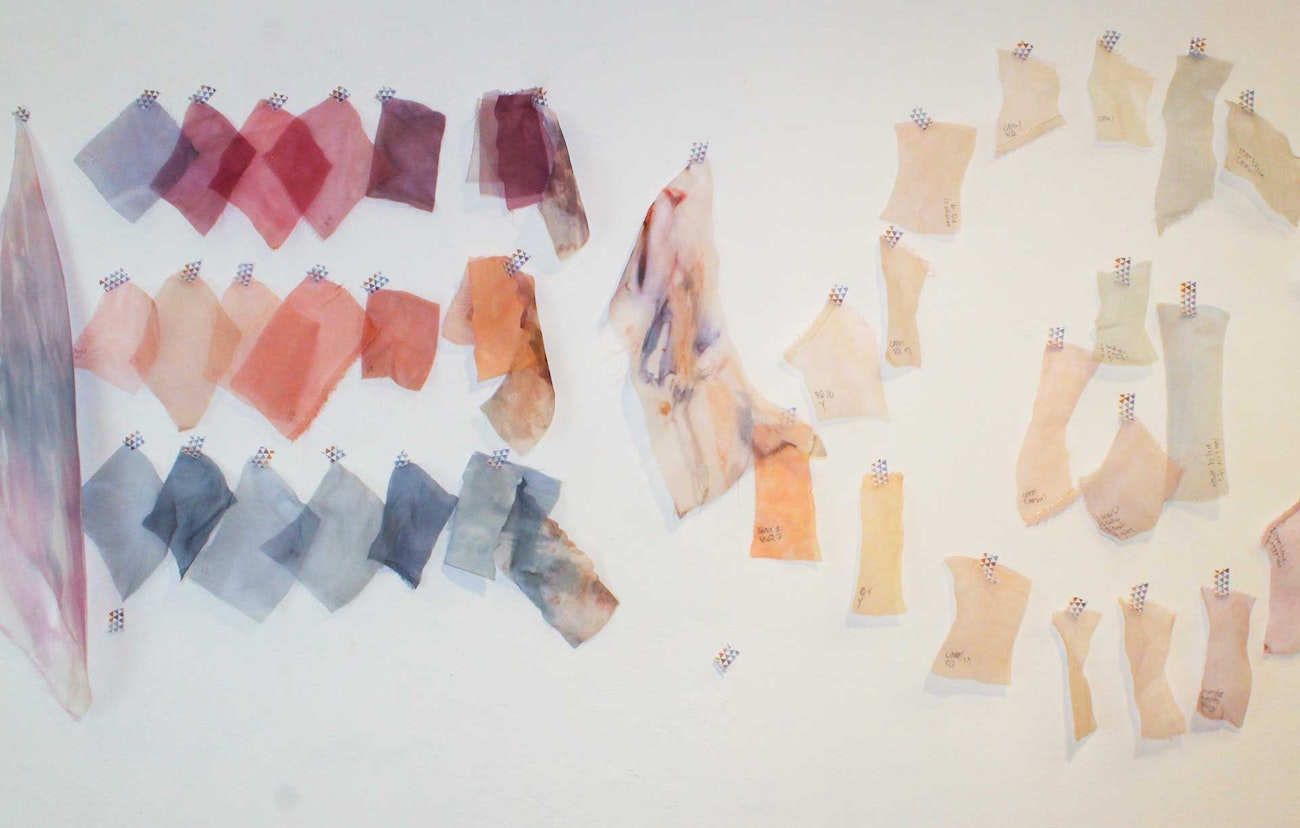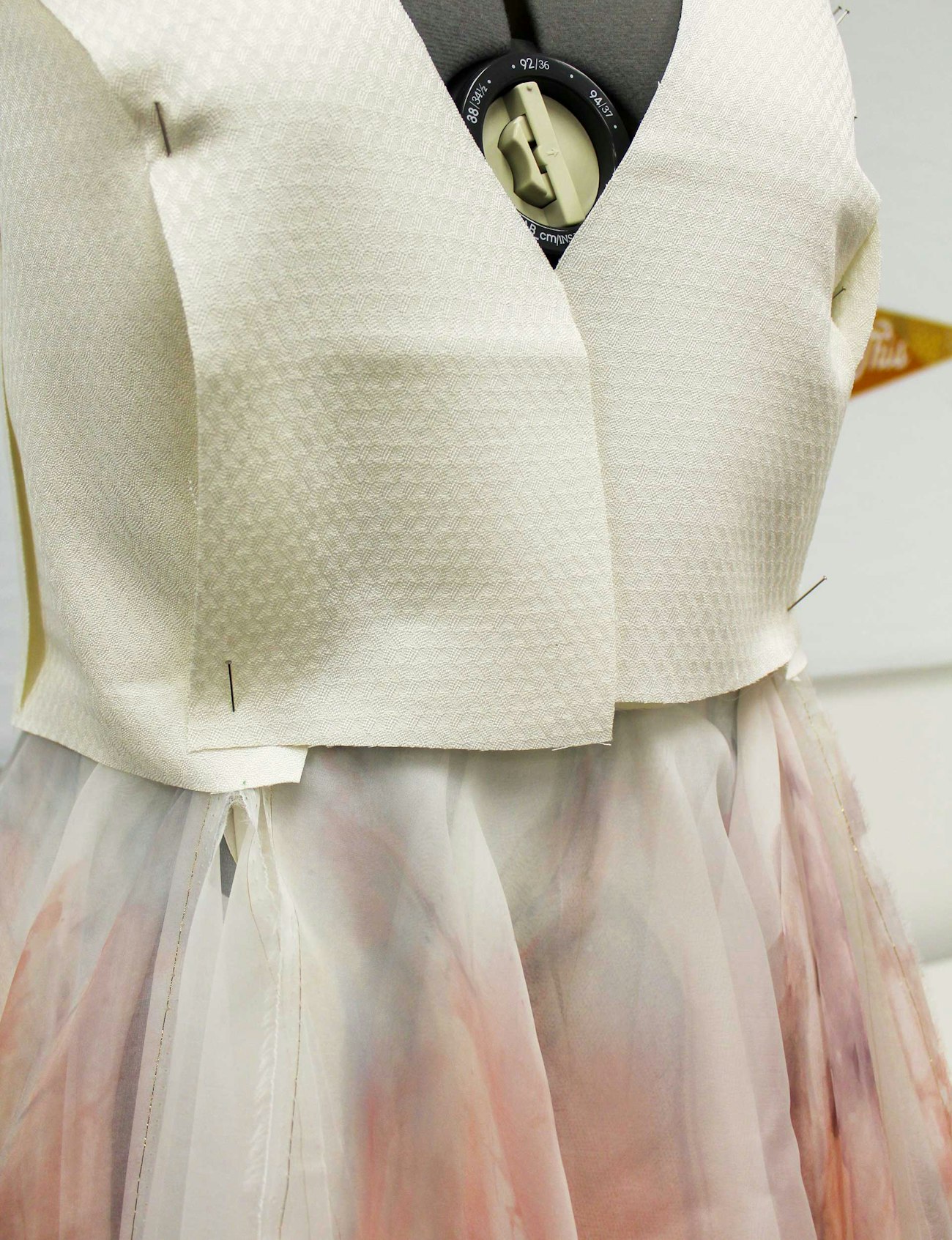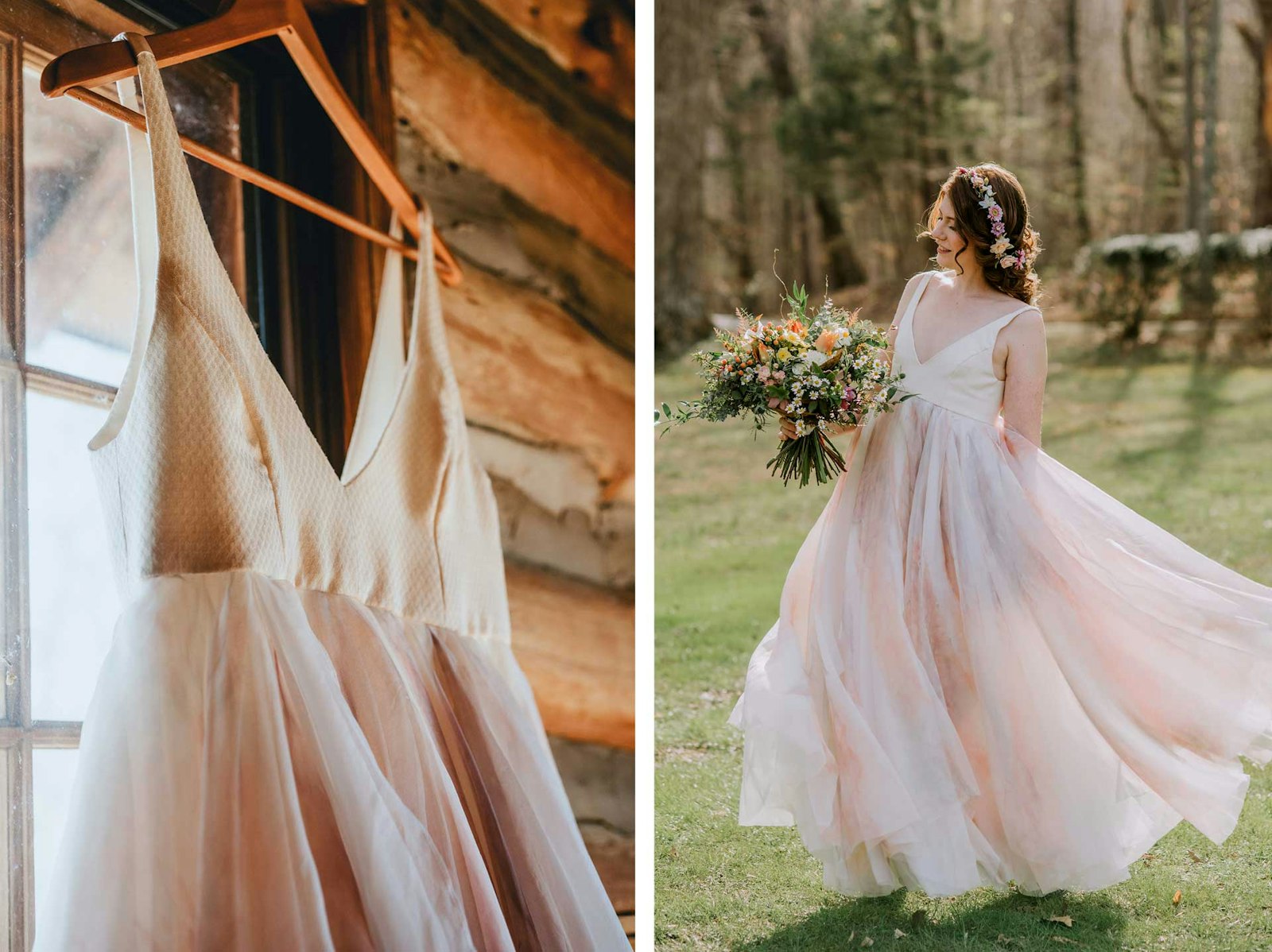Here from Handwoven Sept/Oct 2022 is Kelly Walsh describing how she planned, designed and finally wove, dyed, and sewed her own wedding dress. It's inspiring! ~Susan
I always said I wouldn’t make my own wedding dress—who needs that kind of pressure preparing for what is already a big day? But the more I thought about it, the more I wanted to remember my wedding day wearing something that felt truly “me.” Even after finishing, it still seems wild to weave the fabric for my own wedding dress—but I’m glad I did it. The gown I wore represents my love of textiles and weaving in a unique piece of art.
When I started planning the dress, I knew that if I picked the right silhouette, I could make my dream of using handwoven fabric more attainable. I fell in love with the style of dress created by Leanne Marshall (see Resources) because it felt airy and light. I love the unpredictable effect she achieves with her dyes. Her dresses usually feature a simple bodice with large flowing skirts of layered organza. I decided to weave the fabric for the bodice and dye commercial silk organza for the skirt.
Fitted bodices get their structure from using several pattern pieces, so each piece of fabric is relatively small. Once I’d drafted a bodice I liked, I measured each of the pieces. The largest pattern piece was only 10 inches at its widest point. Suddenly, weaving fabric for my wedding dress seemed much more doable!

Bodice fabric on the loom. Photo by Kelly Walsh.
Next, I chose my yarn. When I first started dreaming about this dress, I thought I’d use Tencel because it’s so affordable, but there’s a reason why silk still dominates the formal fashion world: the way it captures light is pure poetry. In addition, I find that its strength and smoothness make it one of the easiest fibers to work with.
I had no idea what weave structure or draft I wanted to use, so I started sampling—and then sampled some more—on a 4-inch-wide straight draw using a cone of 20/2 silk I had on hand.
One thing everyone discovers about silk is that the angle of the fibers in the weave structure dramatically affects the shininess of the fabric. Plain-woven silk has an almost matte texture, while the diagonal lines in straight twill are even more noticeable in silk than in other fibers. Commercial silk fabrics are often woven in crêpe or satin-weave structures to capture that luminosity without distracting diagonal lines. However, those structures have floats that make unstable fabric unless you have a very tight sett to compensate and prevent your weft from packing in too much.

Dyeing experiments and test swatches. Photo by Kelly Walsh.
I experimented with several different structures. I didn’t want the handwoven fabric in my wedding dress to look like cloth I could have purchased, but rather wanted fabric with a unique and distinctive appearance. In the end, I chose a 16-shaft twill from one of Ralph Griswold’s collections (see Resources).
My sampling showed me that I wanted to use a finer silk. After a bit more experimentation, I settled on 60/2 silk from Maurice Brassard for its strength and fineness. Of course, I had to sett that thread at 60 ends per inch, the most ends per inch I’d ever woven by a long shot! Throughout the whole process—warping, sleying, and threading—I kept reminding myself that the warp was only 14 inches wide on the loom, and before I knew it, I was up and weaving.
Having decided on the fabric for the bodice, I turned next to the dyeing part of the project. What drew me to Leanne Marshall’s designs was the free way the colors seemed to play on the fabric. I don’t usually approach dyeing very scientifically; I love to just splash color around and see what happens. But I quickly realized that, while her use of color seems very carefree and random, that subtlety takes a lot of experimentation and skill to get right.
Our wedding was scheduled for April, and I wanted to play with a springtime palette of colors. I sampled using many tiny squares of fabric, counting out droplets of dye and keeping careful records. My first results were far too cotton-candyish for my liking, so I blended more colors, trying to get something that was both subtle and bright. Eventually I narrowed it down to four shades that would each bring its own character but not muddy the others when the dyes mixed on the fabric.

Fitting the bodice to the silk organza skirt. Photo by Kelly Walsh.
To find the right technique to get the playful blend of colors that looks like an abstract watercolor painting, I went through many bathtub experiments, dipping and spattering dye around, and generally had a lot of fun. My favorite method was to cut the organza into 2-yard pieces, each of which would become one skirt panel. I folded these pieces radially and poured dye onto them so that the color would fall from the waist to the hem. Before dyeing I dampened some sections of the fabric so that the color blending would be encouraged in those areas while other areas would stay white. Although I started my dyeing experiments with fancier silk dyes, in the end, I found that the commonly available Rit dyes worked the best.
Constructing the dress ended up being the simplest part of the whole process—once I got up the courage to cut through my handwoven fabric. I used a fresh sharp blade on my rotary cutter to help prevent fraying. The pieces came together just like they did in my muslin practice round, and soon I was staring at my handwoven and hand-dyed wedding dress.
Weaving my wedding-dress fabric is by far the most intimidating project I’ve ever taken on, but I truly enjoyed every moment of it. On my wedding day, I had a gorgeous gown that was intimate and personal. And every handwoven garment project I take on after this can only feel easier in comparison, right?
Resources
- Griswold, Ralph E., compiler. Classical Collection Volume 2, (Varying dates, 1850–2004?) handweaving.net, draft #7231.
- leannemarshall.com.
KELLY WALSH is a weaver living and working in Durham, North Carolina. Five years ago, she left the tech industry to follow her textile artist dreams.

